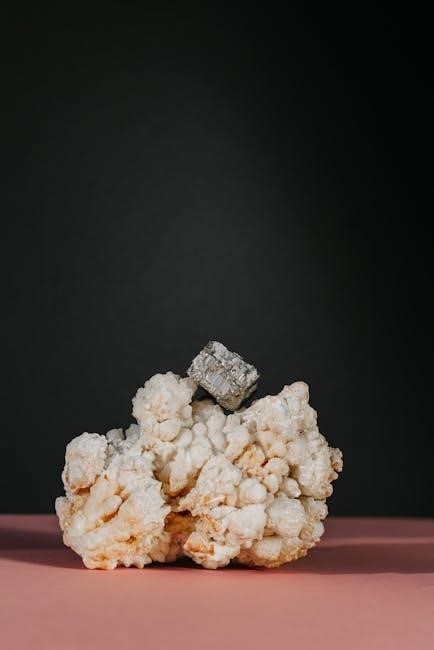
Precious stones, known for their beauty and rarity, are naturally occurring minerals. Traditionally, four—diamonds, sapphires, rubies, and emeralds—are considered truly precious, each with unique characteristics. This guide explores their significance.
Definition and Overview
Precious stones, also known as gemstones, are naturally occurring minerals renowned for their exceptional beauty, rarity, and durability. Traditionally, only four gemstones—diamonds, sapphires, rubies, and emeralds—are classified as truly precious. These stones are prized for their unique characteristics, such as brilliance, color, and hardness, which make them highly desirable for jewelry and collectibles. Their rarity and aesthetic appeal contribute to their value, distinguishing them from semi-precious stones. This guide delves into their properties, classifications, and significance in the world of gemology.
Historical Significance
Precious stones have captivated humanity for centuries, serving as symbols of power, wealth, and spirituality. Ancient civilizations revered these gems, often using them in rituals, royal jewelry, and sacred objects. Diamonds, for instance, were believed to possess magical powers, while rubies and sapphires were associated with royalty and divine protection. Emeralds, with their vibrant green hue, symbolized fertility and growth. These stones have played pivotal roles in shaping cultures, traditions, and even economies, making them timeless treasures that continue to inspire awe and admiration across generations.
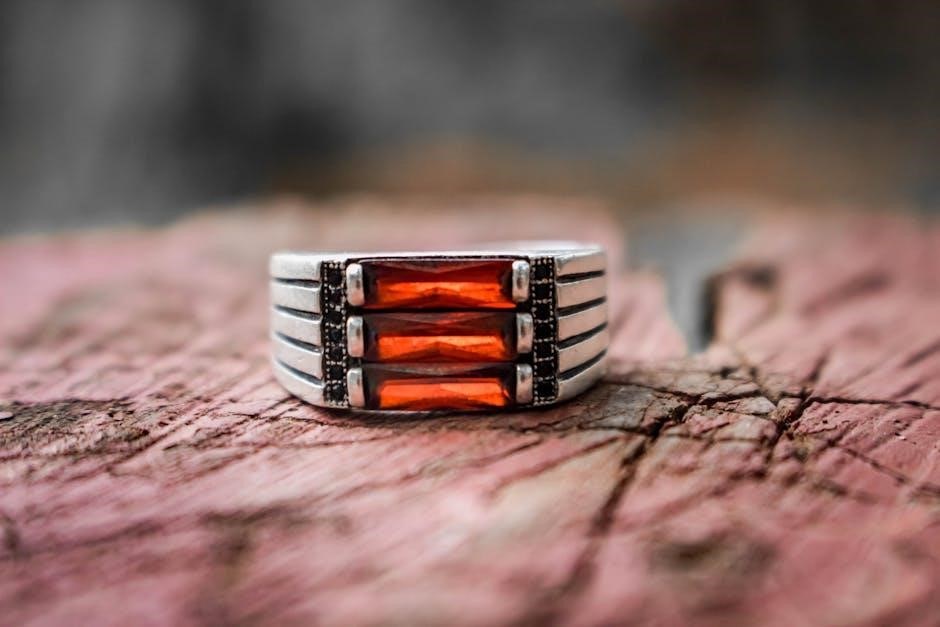
The Four Precious Gemstones
Diamonds, rubies, sapphires, and emeralds are the four traditionally recognized precious gemstones. Each possesses unique beauty, rarity, and durability, making them highly valued for jewelry and collectibles.
Diamonds: Characteristics and Properties
Diamonds, the most popular precious stone, are composed of pure carbon crystallized under extreme pressure. Renowned for their exceptional hardness (10 on the Mohs scale), brilliance, and fire, diamonds are highly durable and resistant to scratches. Their unique refractive properties create dazzling light dispersion. Diamonds are available in various colors, with colorless being the most sought-after. The value of a diamond is determined by the “4Cs”: cut, color, clarity, and carat. Their rarity and timeless beauty make diamonds a symbol of luxury and eternal love, often used in high-end jewelry and engagement rings.
Rubies: The King of Precious Stones
Rubies, a variety of corundum, are celebrated for their deep red color, symbolizing passion and power. Known as the “king of precious stones,” rubies are highly valued for their rarity and durability. With a hardness of 9 on the Mohs scale, they are second only to diamonds. Rubies are often found in Myanmar, Thailand, and Cambodia. Their vibrant color, referred to as “pigeon’s blood,” is the most prized. Historically, rubies have been associated with royalty and spirituality. Their allure endures, making them a cornerstone of luxury jewelry and a symbol of eternal love and strength;
Sapphires: Beyond Blue Varieties
Sapphires, a form of corundum, are renowned for their exceptional hardness (9 on the Mohs scale) and stunning colors. While blue sapphires are the most iconic, they also occur in pink, yellow, green, and orange hues. The vibrant colors are due to trace elements like iron and chromium. Sapphires symbolize nobility and wisdom, often used in high-end jewelry. Their durability makes them ideal for everyday wear. Beyond blue, sapphires offer a rainbow of options, each with unique charm and value, making them a popular choice for those seeking a gemstone that combines beauty with resilience.
Emeralds: The Rare Green Gem
Emeralds are among the rarest and most valuable precious stones, admired for their vivid green color. This hue is caused by trace elements like chromium and vanadium. Known for their inclusions, emeralds often have a “jardin” (garden) of tiny flaws, adding to their uniqueness. Mined primarily in Colombia, Brazil, and Zambia, they symbolize growth and luxury. Emeralds are highly sought after for jewelry due to their striking appearance. Their value depends on color intensity, clarity, and size, making them a true treasure for collectors and connoisseurs of precious gems.
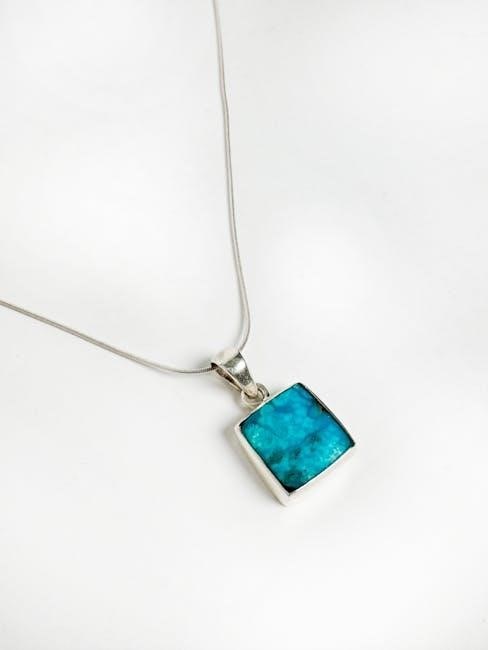
Semi-Precious Stones
Semi-precious stones, like amber, opal, and others, offer unique beauty and affordability. They are prized for their diverse colors and versatility in jewelry, making them widely popular.
Popular Semi-Precious Gemstones
Semi-precious gemstones, such as amber, opal, and amethyst, are celebrated for their unique beauty and affordability. Amber, fossilized tree resin, often contains ancient inclusions, while opal is prized for its iridescent colors. Amethyst, a purple quartz, symbolizes luxury and spirituality. Other popular semi-precious stones include topaz, garnet, and peridot, each offering distinct hues and properties. These gemstones are widely used in jewelry due to their durability and aesthetic appeal, making them accessible to a broad range of styles and budgets.
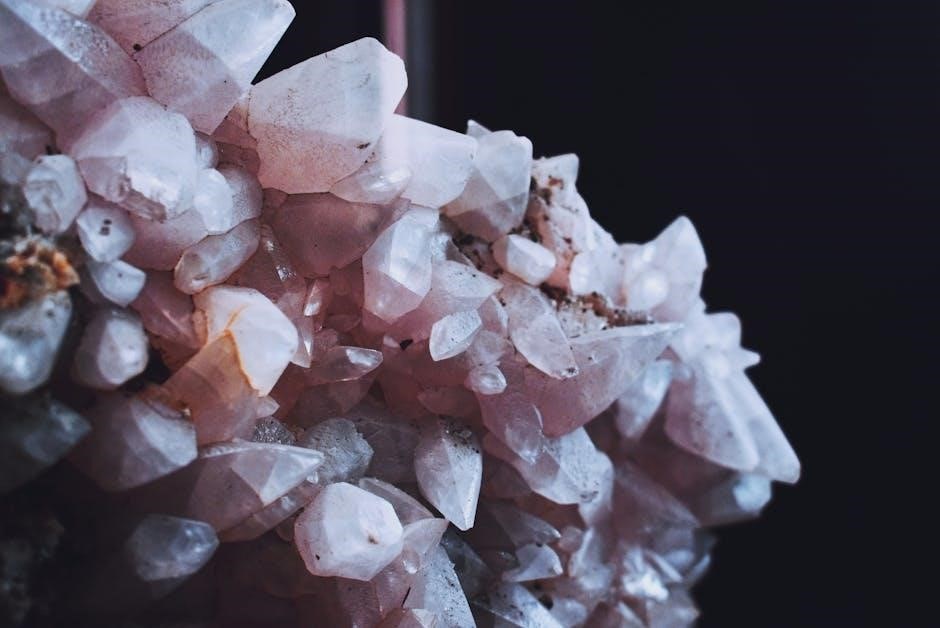
Amber, Opal, and Other Unique Gems
Amber, a fossilized tree resin, is renowned for its golden hues and ability to preserve ancient life forms. Opal, known for its iridescent colors, is prized for its unique play-of-color effect. Both are considered semi-precious and highly sought after for their distinct beauty. Other unique gems include pearls, the only organic gemstone, and turquoise, valued for its blue-green color. These stones, while not classified as precious, offer captivating qualities that make them stand out in the world of gemstones, blending natural history with aesthetic appeal.
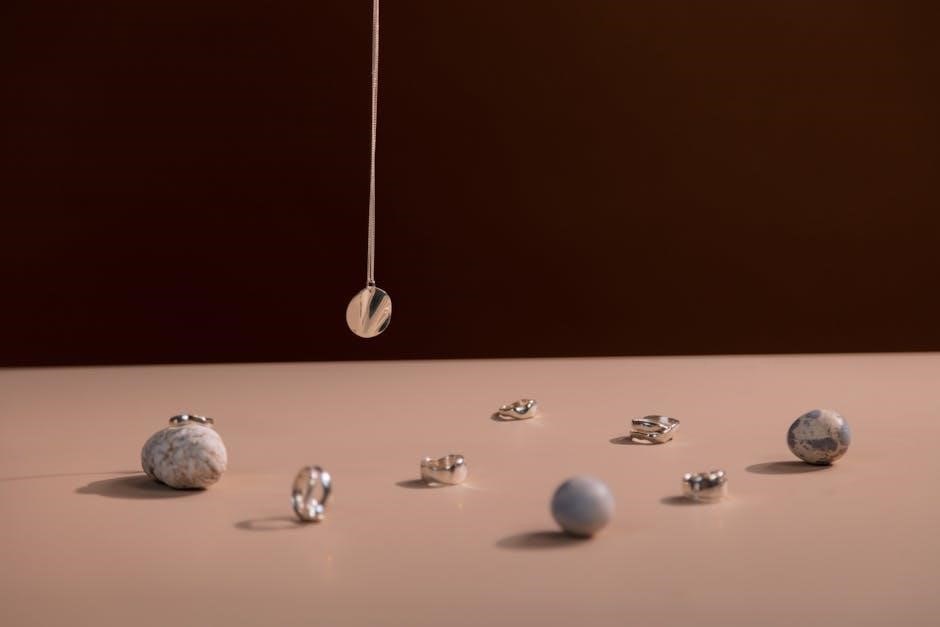
Gemstone Classifications
Gemstones are classified as natural or synthetic, and further categorized as mineral or organic. This classification helps in understanding their origin, composition, and value in the gemstone world.
Natural vs. Synthetic Stones
Natural gemstones are mined from the earth, formed over millions of years, and prized for their unique inclusions and rarity. Synthetic stones, created in labs, replicate natural gems but lack their geological history. While natural stones are rare and often more valuable, synthetics are more affordable and environmentally friendly. Both types are used in jewelry, but natural stones hold a premium in the market due to their authenticity and scarcity. Synthetic stones, however, offer a sustainable alternative with fewer imperfections, appealing to budget-conscious buyers and those prioritizing ethical sourcing.

Organic vs. Mineral Gems
Gemstones are categorized as either organic or mineral. Organic gems, like pearls and amber, are derived from living organisms. Pearls form inside mollusks, while amber is fossilized tree resin. Mineral gems, such as diamonds and sapphires, are inorganic, formed through geological processes. Organic gems are often softer and rarer, with unique textures, while mineral gems are harder and more durable. Both types are valued in jewelry, but their origins and properties differ significantly, making each category distinct in its appeal and application in gemology and craftsmanship.

Gemstone Properties
Gemstone properties include hardness, measured on the Mohs scale, durability, color, clarity, and cut, all influencing their value and appearance in jewelry.
Hardness and Durability
Gemstone hardness, measured on the Mohs scale, determines resistance to scratching. Diamonds, with a rating of 10, are the hardest, while emeralds rank lower at 7.5-8. Rubies and sapphires, both corundum, score 9, making them highly durable. Hardness and toughness (resistance to breaking) are crucial for jewelry use. Durability also considers chemical stability and wear resistance. These properties influence a gemstone’s suitability for various settings and everyday wear, balancing beauty with practicality for lasting value.
Color, Clarity, and Cut
Color, clarity, and cut are critical factors in determining a gemstone’s value. Color is evaluated based on hue, saturation, and tone, with certain shades commanding higher prices. Clarity refers to the absence of inclusions or blemishes, graded on a scale from Flawless to Included. Cut determines brilliance and fire, with well-cut stones refracting light better. These elements collectively enhance a gemstone’s beauty and desirability, making them essential considerations for both jewelers and collectors. Each aspect must be balanced to maximize the stone’s aesthetic and monetary value.
Gemstone Origins
Gemstones form through geological processes, often in specific regions. Their origins influence rarity and value, with notable locations like mines in Asia, Africa, and South America.
Geological Formation
Gemstones form through complex geological processes, often requiring extreme conditions like high pressure, temperature, and mineral-rich environments. Diamonds develop deep within Earth’s mantle over millions of years, while rubies and sapphires form in metamorphic rocks. Emeralds emerge in hydrothermal veins, and opals result from silica-rich water in sedimentary rocks; The unique combination of elements and conditions determines each gemstone’s characteristics, making their formation a rare natural phenomenon.
Notable Mining Locations
Notable mining locations for precious stones include Russia and Canada for diamonds, Myanmar for rubies, and Colombia for emeralds. Sapphires are prominently mined in Australia and Madagascar. These regions are renowned for their rich geological deposits, making them key sources for high-quality gemstones. Each location’s unique geology contributes to the distinct characteristics of the stones mined there, ensuring a diverse and vibrant global supply of precious gems.
Gemstones in Jewelry
Gemstones are central to jewelry, blending tradition with modern design. Their unique beauty and durability make them timeless, while symbolic meanings add emotional value to each piece.
Traditional and Modern Uses
Gemstones have long been cherished for their beauty and durability, making them central to jewelry design. Traditionally, they symbolize status, love, and cultural heritage, often passed down as heirlooms. In modern times, gemstones are used in both classic and contemporary pieces, blending timeless elegance with trendy styles. Their versatility allows them to be set in engagement rings, pendants, and everyday wear. Beyond aesthetics, gemstones are valued for their symbolic meanings, such as diamonds representing eternal love and rubies signifying passion. This duality of tradition and modernity ensures gemstones remain a cornerstone of jewelry design and personal expression.
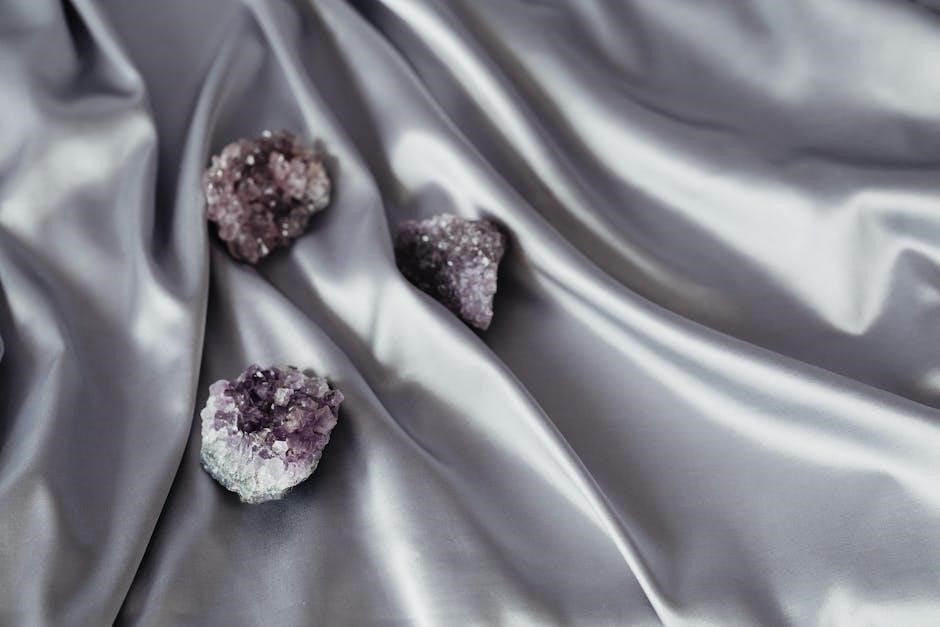
Trends in Contemporary Jewelry Design
Contemporary jewelry design blends tradition with innovation, emphasizing unique styles and sustainable practices. Designers often mix precious and semi-precious stones for versatile, eye-catching pieces. Minimalist designs with clean lines and subtle details are popular, while bold, statement-making jewelry also gains traction. Ethical sourcing and eco-friendly materials are increasingly prioritized. Customization is another trend, allowing wearers to personalize their jewelry. Technology, such as 3D printing, enables intricate designs previously unattainable. These trends reflect a shift toward individuality and environmental consciousness, redefining how gemstones are used in modern jewelry while preserving their timeless allure and significance.
Gemstone Care and Maintenance
Proper care ensures gemstones retain their brilliance. Use mild soap and water for cleaning, avoiding harsh chemicals. Store each precious stone separately to prevent scratches and damage.
Best Practices for Cleaning
Cleaning precious stones requires care to maintain their brilliance. Use mild soap and lukewarm water, gently scrubbing with a soft brush. Avoid harsh chemicals, acids, or abrasive materials. For delicate gems like opals or pearls, stick to damp cloths. Ultrasonic cleaners are effective for diamonds and sapphires but may damage softer stones. Avoid extreme temperatures and never clean jewelry near open flames. Regular cleaning prevents dirt buildup, preserving the stone’s luster. For complex or antique pieces, consult a professional jeweler to ensure safe and effective cleaning.
Storage and Protection Tips
Proper storage is essential to preserve the beauty and value of precious stones. Store jewelry in a cool, dry place, away from direct sunlight to prevent fading. Use individual compartments or soft fabric pouches to avoid scratching. Avoid stacking pieces, as harder stones like diamonds can damage softer ones. Clean hands before handling to prevent oil and dirt transfer. For long-term storage, consider professional vaults or safety deposit boxes. Regularly inspect settings and clasps to ensure stones are secure. Proper care ensures your treasures remain pristine for generations.
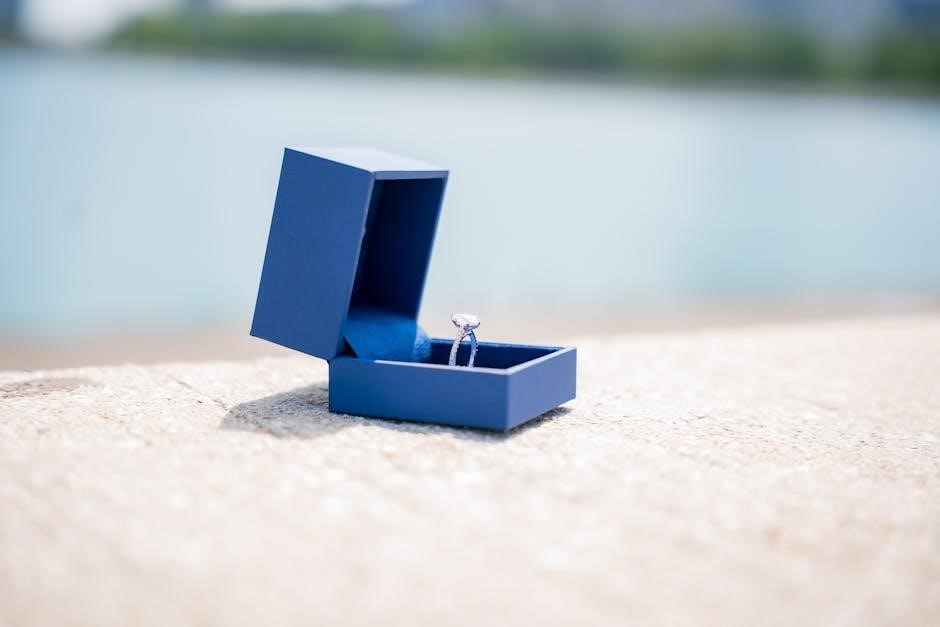
Gemstone Market and Value
The value of precious stones is influenced by rarity, quality, and demand. Diamonds, sapphires, rubies, and emeralds are highly sought after, with prices reflecting their scarcity and beauty. Market trends show increasing interest in ethical sourcing and sustainable practices, impacting prices and consumer preferences.
Factors Influencing Value
The value of precious stones is determined by several key factors. Rarity plays a significant role, as scarcity increases demand. Quality, including clarity, color, and cut, also impacts value. Market demand fluctuates based on trends and consumer preferences. Additionally, provenance and certification from reputable organizations like the GIA can enhance a gemstone’s worth. Emerging trends, such as ethical sourcing and sustainability, are increasingly influencing buyer decisions, affecting prices and desirability in the market.
Current Market Trends
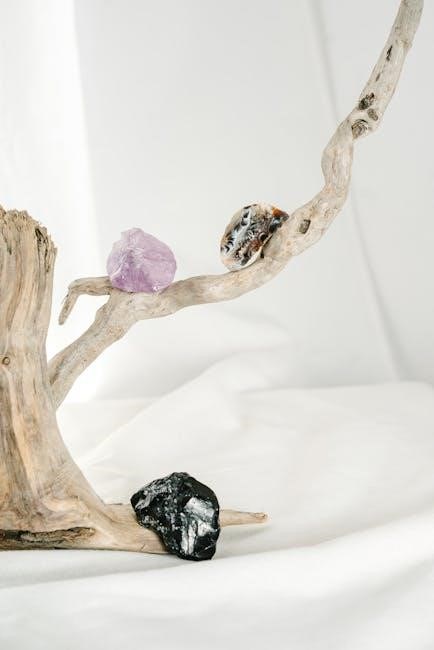
The market for precious stones is evolving, with a growing emphasis on ethical sourcing and sustainability. Consumers are increasingly prioritizing environmentally responsible and conflict-free gemstones. Lab-grown diamonds are gaining popularity as a more affordable and eco-friendly alternative. Additionally, there is a rising demand for colored gemstones, particularly sapphires and emeralds, driven by their unique beauty and rarity. Semi-precious stones are also becoming more sought after, offering accessible luxury. These trends reflect shifting consumer preferences toward transparency, sustainability, and individuality in the gemstone market.
Precious stones captivate with their beauty, rarity, and historical significance. As natural wonders, they continue to inspire admiration and value, ensuring their enduring allure in jewelry and beyond.
Final Thoughts
Precious stones captivate with their natural beauty and rarity, embodying timeless allure. From diamonds to emeralds, each gem holds unique charm and historical significance. Their emotional and cultural value transcends time, making them treasured possessions. As natural wonders, they continue to inspire admiration and desire, reflecting both personal style and enduring elegance. Whether in jewelry or as collectibles, precious stones remain symbols of luxury and sophistication, ensuring their lasting appeal in an ever-evolving world.
Future of Precious Stones
The future of precious stones is shaped by innovation and sustainability. Lab-grown diamonds and synthetic gems are gaining popularity, offering ethical and affordable alternatives. Advances in technology enhance stone analysis and authentication, ensuring quality and transparency. Consumer demand for traceable, responsibly sourced gems is rising, driving the industry toward eco-friendly practices. Digital certification and blockchain technology are expected to revolutionize gemstone tracking, ensuring authenticity. As trends evolve, precious stones will continue to blend tradition with modernity, maintaining their allure while adapting to a changing world focused on sustainability and ethical practices.